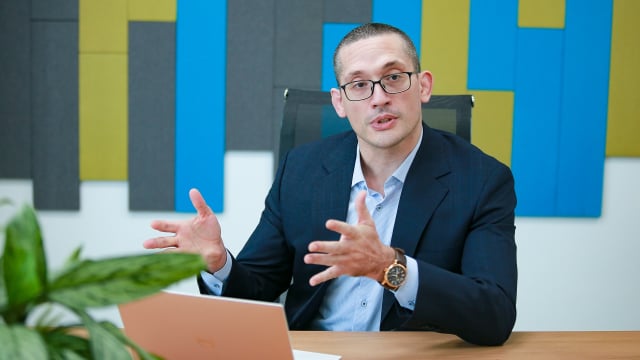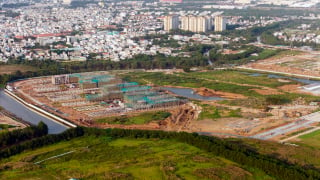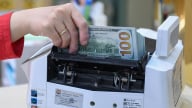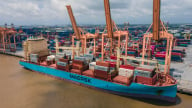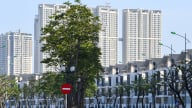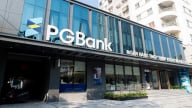Leader Talk
Vietnam’s tourism boom paving the way for seaside tourism real estate market
With the strong development of tourism industry, impressive economic growth, and the efforts of Vietnam in improving infrastructures, the country's seaside real estate has a lot of potentials to grow strongly, according to chief operating officer of Indochina Capital Michael Piro.

In 2017, there were nearly 13 million international tourist arrivals, 29 per cent higher than the previous year with a five-year compounded annual growth rate (CAGR) of 14 per cent per annum.
China and South Korea are two countries having the largest numbers of visitors to Vietnam last year and is increasing at a very fast rate. However, Chief operating officer of the property developer Indochina Capital Michael Piro says that this overreliance could spell trouble and diversification would reduce the number of risks and build in a safety for real estate developers.
Meanwhile, the number of domestic tourist arrivals in Vietnam last year was 73.2 million people, 18 per cent higher than in 2016, with a five-year CAGR of 16 per cent per annum.
Especially, Vietnam’s air passenger traffic growth is highest in Southeast Asia, with a five-year CAGR of 17.4 per cent.
According to the representative of Indochina Capital, Vietnam is having many catalysts for tourism growth, including macroeconomic indicators favoring development growth; infrastructure improvements, especially Phu Quoc and Van Don connected to the national grid; airport upgrades, relaxation of visa requirements, the rise of the middle class which is becoming more mobile and is a main driver for growth in the domestic tourism market.
In addition, Vietnam has a lot of market opportunities, especially when new developers want a piece of the “cake”. The biggest developers are also working directly with the government to expedite large infrastructure projects, such as metro lines in Hanoi and Ho Chi Minh City.
He says that those factors would greatly contribute to the development of Vietnam seaside real estate, especially in young Vietnamese markets like Nha Trang, Danang, Phu Quoc beach resort markets.
In Nha Trang, the average daily rate (ADR) in both four-and five-star properties have remained flat. While demand has continued to increase, the lack of supply of branded properties has hurt the market’s performance. However, occupancy has remained extremely high, reinforcing the market’s potential.
After a marked increase in 2012, ADR in Phu Quoc is one of the highest in the nation. However, the limited supply of resorts and hotels has led to an inflated occupancy rate. Michael Piro says that young real estate markets in Vietnam are full of potential, but developers must rethink their strategy to fully realize it.
In Danang, five-star beachfront properties perform significantly better than their four-star counterparts, which is attributed to the popular high-rise nature in the four-star segment.
Besides the opportunities for its growth, Vietnam tourism must also face a number of challenges, noticeably, overdevelopment is damaging Vietnam’s pristine beaches.
Accordingly, challenges to the tourism industry quality of development. Low-quality resort developments have started to flood the market. Good short-term results do not mean long-term success; therefore, developers need to continually adapt to avoid an outdated resort and create a timeless property.
Michael Piro also says that guaranteed returns in Vietnam are unparalleled; certain developers are offering 8-12 per cent returns over a period of 8-10 years.
"No one in the world is offering this level of returns," he said.
High guaranteed returns could also suggest poor cash flow management as it is extremely difficult to generate these types of returns organically and cash management is an important aspect of real estate development. According to Michael Piro, guaranteed returns can be used, but its use should be restrained.
Vietnam Seaside Tourism Real Estate Forum 2018: Effective Governance on Investment and Business
When organic becomes an inspiring wellbeing lifestyle
For Tyna Huynh, co-founder of Drinkizz, organic is not just a food choice but a way of life that fosters a deep connection between people, nature and community.
Garment factories embracing respectful workplaces
Embracing respectful workplaces could very well be the key to unlocking a more prosperous future for Vietnam's garment industry.
Vietnamese corporates in new era: The reborn dragon
Vietnamese businesses have had a long journey with great achievements, and this path will continue and blossom in years to come.
The future of jobs in AI era
While some jobs are expected to be replaced by emerging AI applications, the technology is broadly seen as a catalyst for positive transformation in the workforce.
Financing Southeast Asia’s energy transition
The energy transition is bringing forth new challenges, particularly in refining financial systems.
Few countries are better placed than Vietnam for consistent robust growth
Alex Hambly talks about investment opportunities in Vietnam following his appointment as chief investment officer (CIO) of VinaCapital.






















